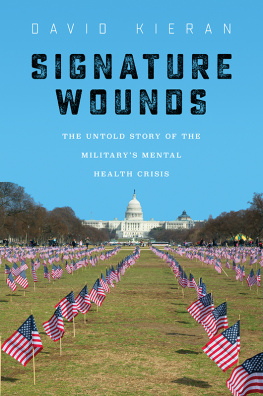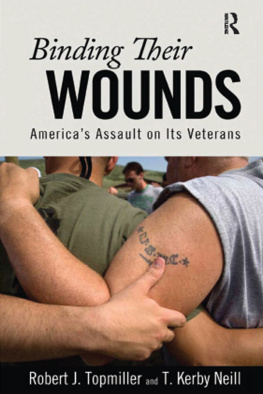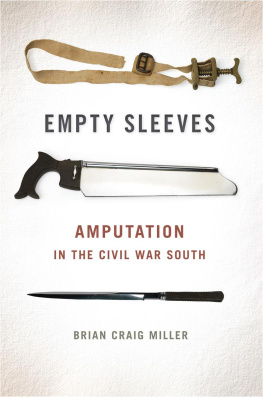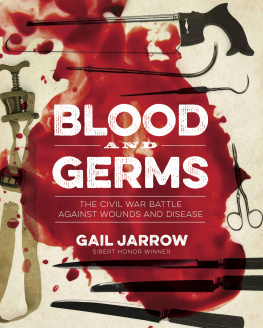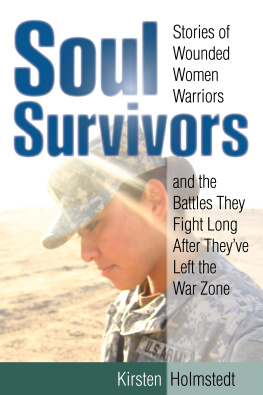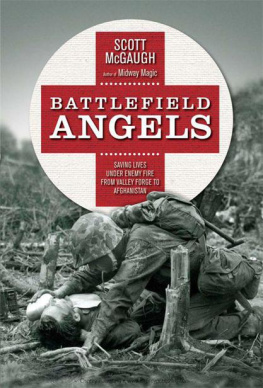BROKEN BODIES/SHATTERED MINDS
A Medical Odyssey from Vietnam to Afghanistan
BROKEN BODIES/SHATTERED MINDS
A Medical Odyssey from Vietnam to Afghanistan
Ronald J. Glasser M.D.
Former Major, United States Army Medical Corp

Copyright 2011 by Ronald Glasser M.D.
All rights reserved.
No part of this publication may be reproduced, stored in a retrieval
system, or transmitted in any form or by any meanselectronic,
mechanical, photocopying, recording, or otherwisewithout prior
written consent from the History Publishing Company.
Published in the United States by
History Publishing Company LLC
Palisades, NY 10964
www.historypublishingco.com
SAN: 850-5942
Glasser, Ronald J.
Broken bodies/shattered minds : a medical odyssey
from Vietnam to Afghanistan/Ronald J. Glasser.
p. cm.
Includes bibliographical references and index.
LCCN 2011927256
ISBN-13: 9781933909486
ISBN-10: 1933909471
ISBN-13: 9781933909486 (e-book)
ISBN-10: 193390948X (e-book)
1. Soldiers--Wounds and injuries--United States. 2. Soldiers--Health and hygiene--United States. 3. Soldiers--Mental health--United States. 4. United States--Armed Forces--Medical care. 5. Vietnam War, 1961-1975--Health aspects. 6. Afghan War, 2001---Health aspects. I. Title.
UH215.G53 2011 355.3450973
QBI11-600091
Printed in the United States on acid-free paper
9 8 7 6 5 4 3 2 1
First Edition
In admiration and respect for Dr. Michael McCue, arguably one of the finest neurosurgeons in America, who cares for the wounded of Iraq and Afghanistan through the Department of Defense Heroes Program and who edited these pages for content and accuracyparagraph by paragraph and sentence by sentencewith a surgeons scalpel.
CONTENTS
FOREWORD
In a country that over the last forty years has grown more distant, becoming less involved and less concerned about its military, Dr. Glassers newest book is both a cautionary tale as well as a powerful redemptive work. Expertly crafted, there are sections of this book that could be used by active duty personnel to teach past military historyboth successes and failuresas well as become a primer on current strategy and tactics, including the liturgy of the ever-changing, ever-more-deadly, and evermore-challenging wounds of war.
The connections with our past wars, particularly between Vietnam and our current wars, are valid on factual grounds. We never had enough troops in Vietnam and we do not have enough troops in Afghanistan. We never sealed the borders in Vietnam and we cannot seal the borders in Afghanistan. We never had a real exit strategy in Vietnam and we clearly do not have an exit strategy of any merit or validity for Afghanistan. We trained a South Vietnamese Army that lasted a year. The Iraqi Army will last a few months, the Afghan Army a few weeks.
Dr. Glasser writes with a quiet elegance, factual precision, and emotional restraint that make this a book of great power and greater substance. It will enlighten, amaze, and trouble youand it is a book America needs now, more than ever.
Lt. General Harold G. Moore, U.S. Army (Retired)
1.
FORTY YEARS OF WAR
Why write anything? For those who arent there, its like it isnt happening, and for those who are, its like it doesnt count. But there have been 1.9 million soldiers and marines deployed to Afghanistan and Iraq over the last decade, with over 5,000 killed, some 300,000 wounded, another 250,000 diagnosed with PTSD and over 300,000 with traumatic brain or concussive central nervous system injuries, along with amputees approaching levels not seen since our Civil War. These are by any measurement or comparison truly enormous numbers. Youd think that so many wounded, if not dead, would be hard to ignore. But they are.
Yet, these numbers do count, not only to the families of those killed and wounded, but also to the nation. The Iraq and Afghanistan wars have become a 3 trillion dollar war that we can continue to ignore or simply write off. There will be both a moral and economic reckoning before these wars are over and we all finally do go home. And that is what this book is about, that reckoningthe physical, mental, and psychological costs of these wars, those real and those invisible wounds, the anguish and persistent suffering. Unlike all our other wars, the real legacy of Iraq and Afghanistan is not the graveyard but the orthopedics ward, the neurosurgical unit, and the psychiatric outpatient department.
This is a book about forty years of war. It is written from the bottom up rather than from the top down. These are the stories of the soldiers and the marines who actually did and still do make the fight, and those doctors, nurses, and medics who are there when they die and then simply turn around and go on to try to save those who have somehow managed to survive. It is not a book of memoirs or even remembrances, nor is it a book of narrative non-fiction; these stories are no more and no less than the truth. Everything in this book happened. All the numbers and facts are real.
But war is a brutal business. So in places Ive changed unit designations in the hopes of protecting those we have once again sent out to the Edge of Empires. In All the Toms and All the Jakes, the real Tom and Jake asked me not to use their names. I interviewed both a number of times. They not only survived their deployments, they survived intact. Tom is now in Special Forces and Jake will soon be leaving the Marines.
Yet, because of the confusion caused by the Armys and Marines multiple deployments, I merged Toms and Jakes stories with those battles and firefights they had heard about or those fought by other squads or platoons in their company, regiment, or brigade in order to give a clearer understanding of a history that had so quickly overtaken both the strategists as well as those making the fight. What is unchanging and unchangeable is that those things Tom and Jake saw and experienced were exactly the same things that were seen and experienced by every soldier and marine I talked to or interviewed. There is a terrible democracy to war.
The wounds though, those mangled arms and lost legs, the burns and penetrating head wounds, the transected spinal cords, the grief and the depression, the traumatic brain injuries, the blindness and the pain, all speak for themselves. As for the dead, we still have our poets:
You think their dying is the worst thing that can happen.
Then they stay dead.
2.
THE LATE GREAT 1968/WELCOME TO THE ARMY
During the decade of the Vietnam War, the Selective Service System swept up some 20,000 draftees every month! Over 4 million troops were sent to Southeast Asia to fight, to die, and be wounded in Vietnam, Laos, and Cambodia. Whatever has been written or said about Vietnam, there was a regular harvesting of young men and little else before it was over.
By the time I was drafted in the summer of 1968the year that I completed my medical specialty training and ended my military defermentthe Army was not only running down, but running out of virtually everything, including physicians. The chief of the county hospital where I had finished my training as a pediatrician wanted me to stay on at the hospital to care for the pediatric patients of the countys indigent population. He actually sent a letter to the Pentagon, through our Senator, asking for an additional two-year deferment for me.
Next page

